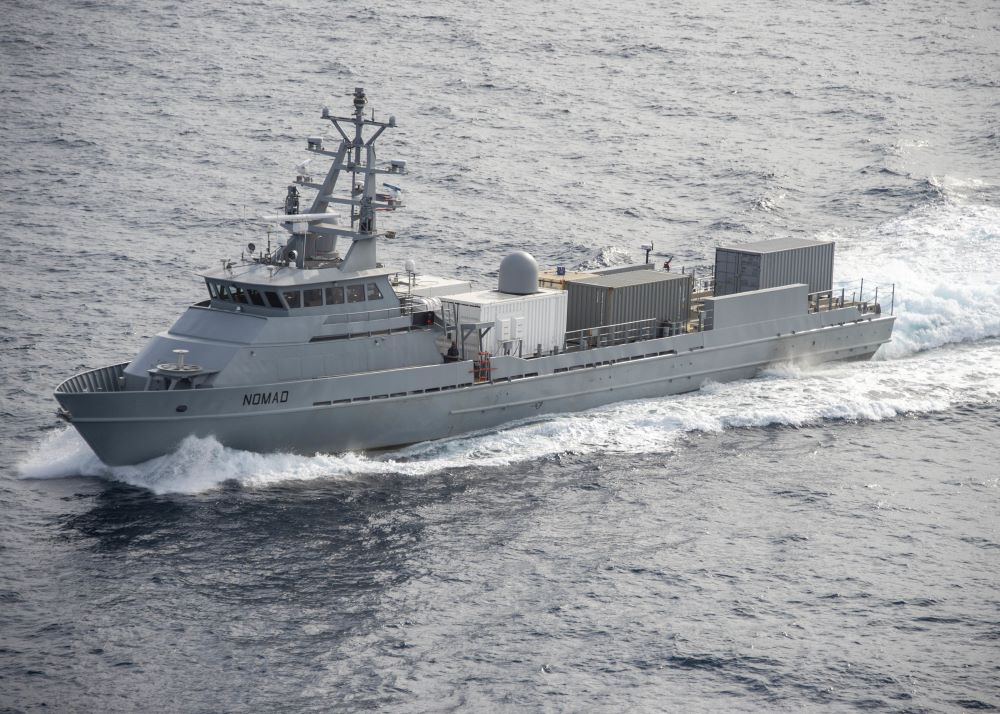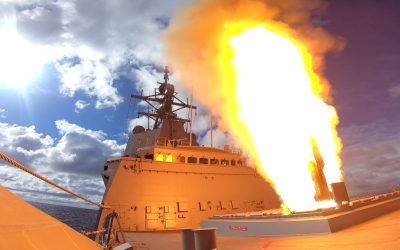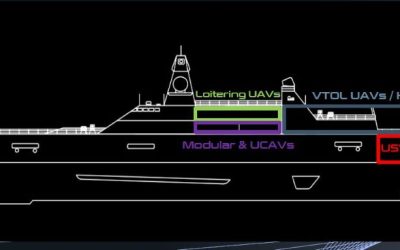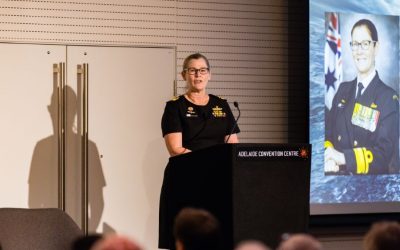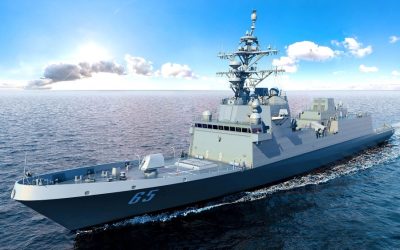The RINA Warship conference in Adelaide in June 2024 heard that surface combatant survivability needs to be revisited to address challenges posed by attacks by multiple UAVs, and uncrewed vessels have challenges all of their own.
Future warships will have to be able to survive – and fight – in the face of a new range of threats. Some of the ships in question could well have a reduced crew or be uncrewed. Two papers presented at the RINA Warship 2024 by representatives of QinetiQ addressed some of these issues, one examining survivability in the face of attacks by multiple uncrewed aerial vehicles (UAVs), the other addressing survivability issues facing next-generation warships with a reduced crew or no crew.
A paper by QinetiQ consultant, marine survivability Andrew Martin and Associate Systems Engineer Josh Neill noted that parallel developments in uninhabited (uncrewed) small surface vessels (USV) and ‘loyal wingman’ concepts for combat aircraft suggest that large USVs (LUSVs) will form a significant element of many naval forces in the future.
Their paper, ‘Designing to survive beyond 2040 – opportunities and challenges of LUSV,’ explored the implications of ultra-low crewing and uninhabited LUSVs for vessel security, vulnerability, damage control, repair and recovery. In doing, they explored opportunities for radically different operating methods alongside the naval architectural issues that will arise as LUSVs break the dependence on human limitations.
They noted, at present, these vessels represent a first generation of LUSV, based on commercially-available ship designs, but as experience in the operation is gained, a second generation will evolve, characterised by being purpose-designed to operate with minimal concession to the needs of personnel onboard.
As with any other warship, one of the key drivers to their design will be their survivability against a range of threats, but without a crew onboard, new issues arise and “major design decisions will need to be faced, including whether such vessels are expendable, whether their uncrewed
status allows operation in areas where the threat is too great for crewed ships, and where the balance will lie between susceptibility, vulnerability and recoverability in the design,” Martin and Neill noted.
In a paper entitled ‘Survive the Swarm! Warship vulnerability to swarming uncrewed aerial vehicle attacks,’ Mr Neill described methods of vulnerability reduction for surface vessels against a swarming UAV attack and an investigation modelling a salvo of armaments against a frigate size vessel using QinetiQ’s Survive software capabilities.
As he noted, naval platforms today are typically armed with either intercept missiles or close-in weapon systems (CIWS) to deal with incoming air threats such as missiles and aircraft. Crew may be less experienced in use of the combat system and air defence systems to track and address larger numbers of smaller air threats simultaneously than is conventional. If a swarming UAV attack was to occur, it is plausible that vessel air defence capabilities will become overwhelmed, due to the inability to employ sufficient countermeasures for all avenues of attack, leading to multiple successful weapon strikes being delivered to a single target.
As Mr Neill noted, in warship design, survivability principles of redundancy and separation, and concentration and protection, are typically considered for damage from a single threat weapon. How these principles fare in the context of multiple weapon strikes is in need of urgent consideration, hence QinetiQ’s modelling of an attack on a frigate by a salvo of small, guided bombs. “This is a novel type of vulnerability assessment whereby a large number of threat weapons are modelled as striking the same target vessel as part of a single damage scenario,” said Mr Neill.
More details can be found in the October 2024 issue of Warship Technology.
